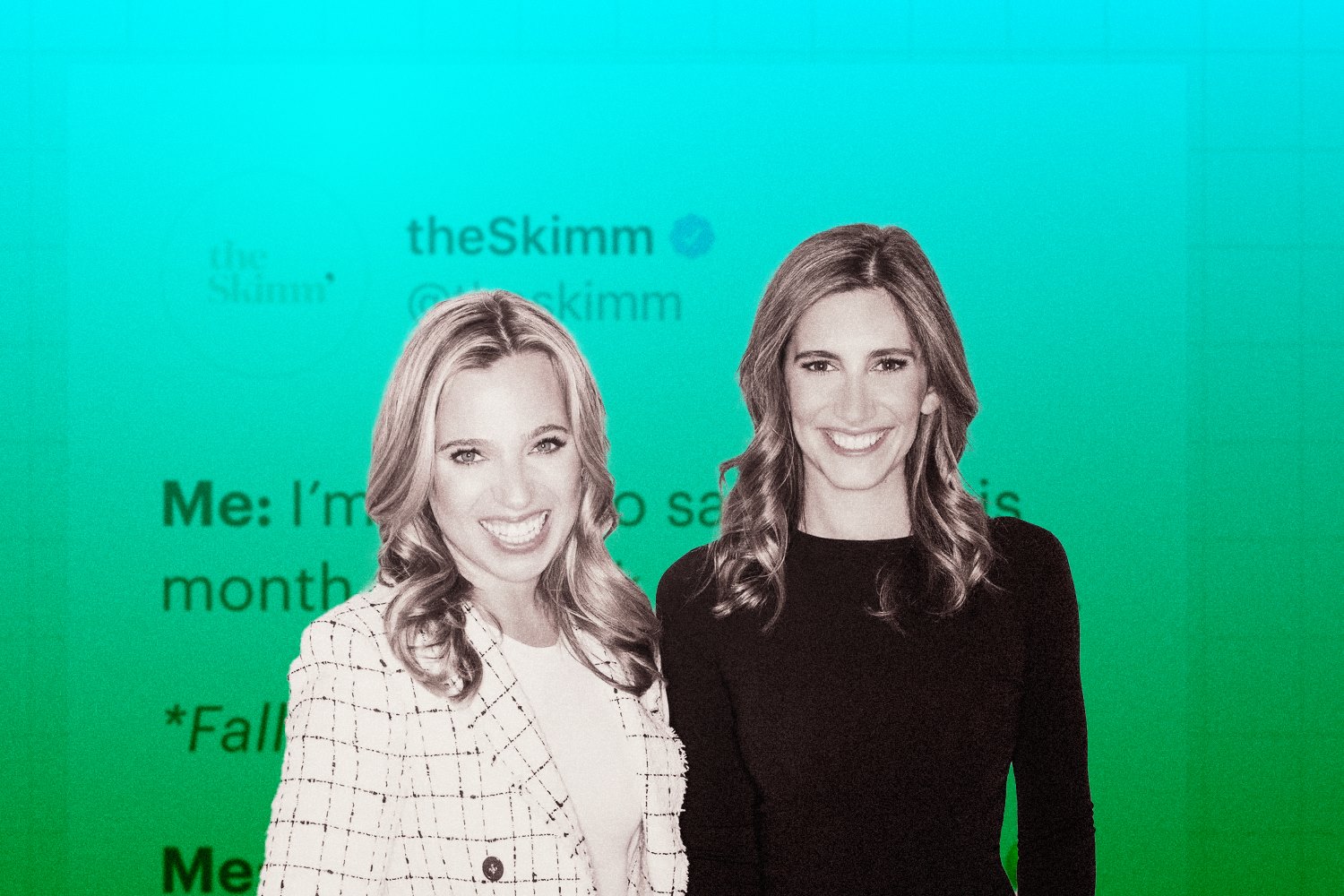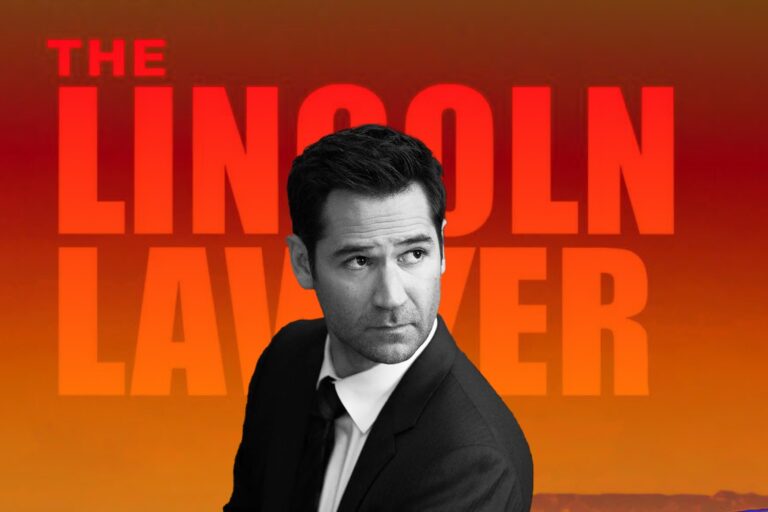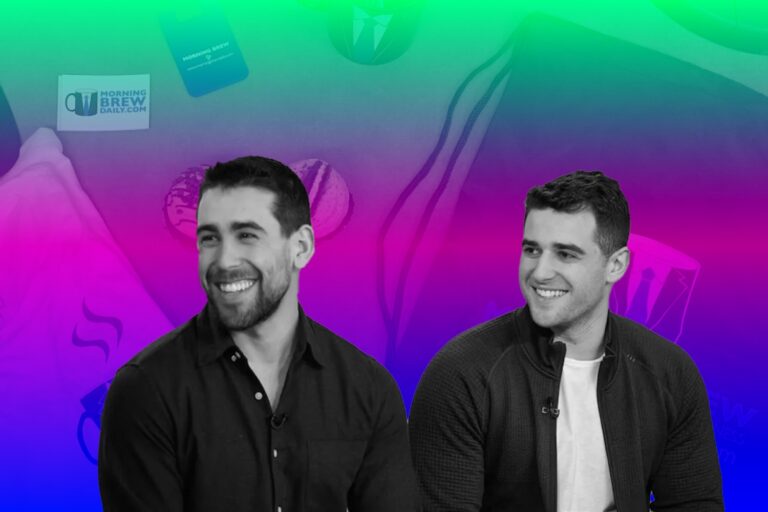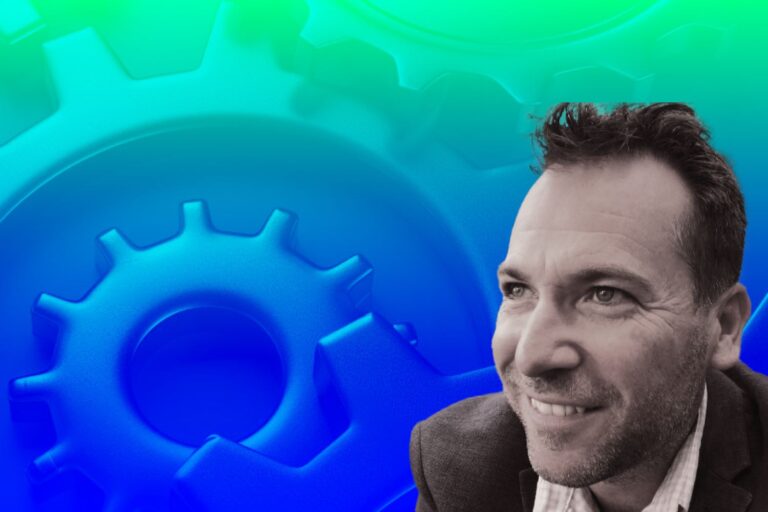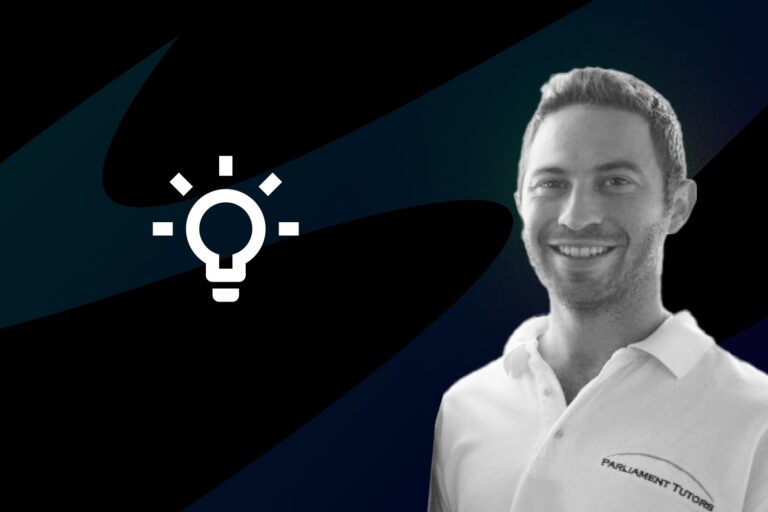theSkimm – How the Founders Defied All Odds to Build a Thriving Business
A report by the Reuters Institute for the Study of Journalism highlights a growing trend of people avoiding major news stories, with 38% admitting to doing so—up from 29% in 2017. Younger audiences (under 35) are particularly affected, with 36% stating that news negatively impacts their mood.
Yes, news avoidance is a thing in modern society. People don’t like complex news that uses a traditional tone, which is no longer an effective method to engage people with news. There are so many things happening right now in the world, such as the coronavirus pandemic, Russia’s invasion of Ukraine, and the cost-of-living crisis, but many people aren’t aware of these things.
Many outlets have indeed adjusted their strategies to attract a broader audience, but these changes often lack a personalized approach that fits seamlessly into people’s daily routines. This is where theSkimm excels.
TheSkimm is known for its friendly, conversational tone, making readers feel like they’re getting news updates from a friend rather than a traditional news source. This makes complex news more accessible and engaging.
However, the journey to becoming a trusted source of information, especially for women, hasn’t been easy. The roadblocks they overcame while shaping the company offer valuable lessons for other entrepreneurs. Let’s go back to the early days to see how theSkimm started.
Turn the Love of Journalism into an Entrepreneurial Venture
Danielle Weisberg and Carly Zakin initially met during their college study abroad program in Rome. Although they had interned for some of the same individuals at different times, their paths had crossed multiple times before. They reconnected after college while both were working at NBC News, eventually becoming friends and roommates.
From a very early age, both Danielle Weisberg and Carly Zakin were passionate about journalism. As Danielle Weisberg mentioned, “Carly and I both grew up wanting to work in journalism. What really drew us to that world was the idea of storytelling. I think that evolved—you know, it was journalism for me; for Carly, it was going into politics.”
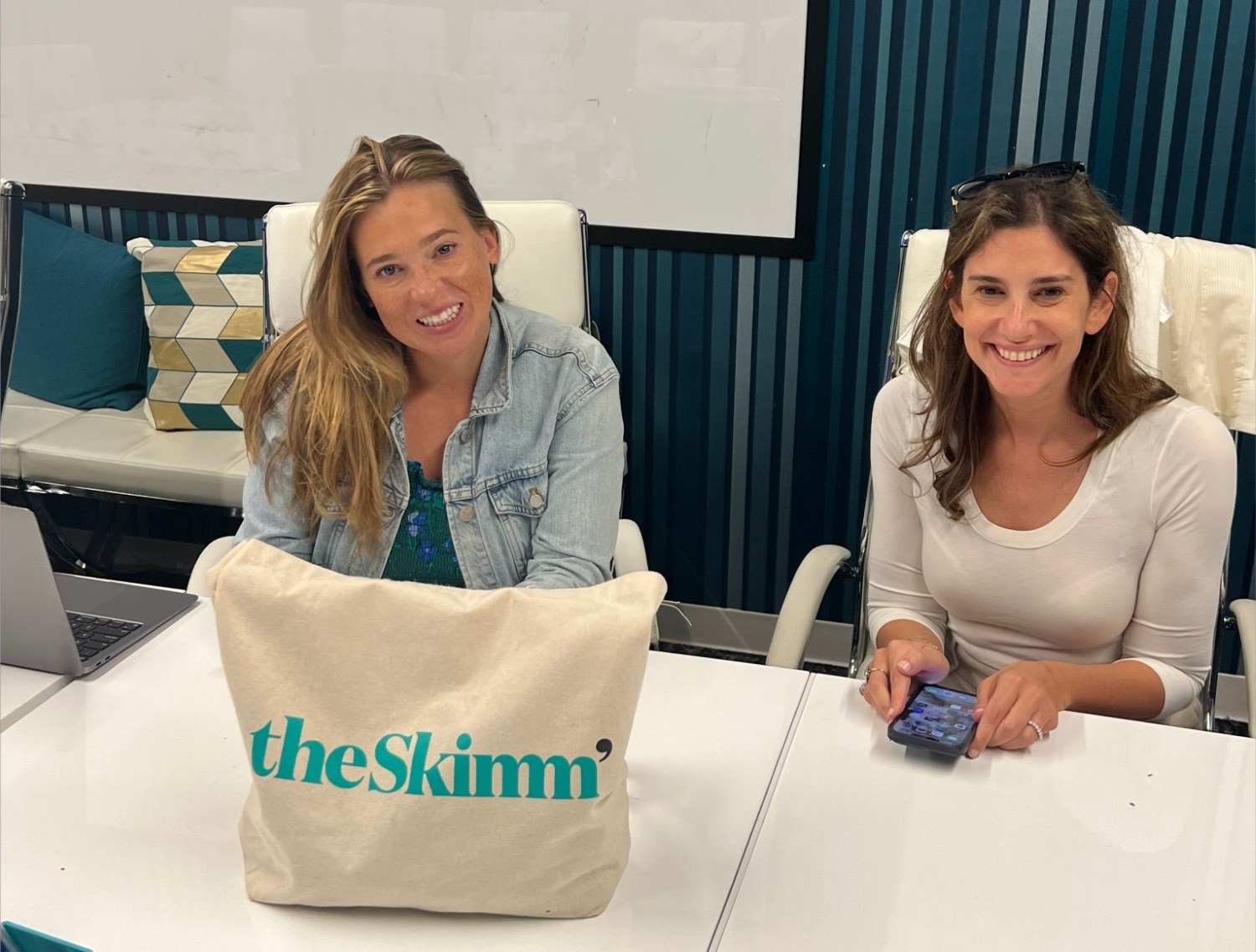
Their entrepreneurial journey began with a shared, unspoken vision. They conceived the idea for The Skimm, a platform for digestible news, without explicitly articulating it to one another.
Carly Zakin stated, “We didn’t spitball different ideas—one idea, which was The Skimm, we just didn’t have a name for it at first. It’s funny because it really shows how much we were on the same page and shared the same vision. We literally never articulated to the other, ‘This is the idea.’ We just both knew.”
When they observed their friends—intelligent, busy women—seeking updates on what they had missed due to their limited time, it became evident that traditional media outlets were not adequately serving this audience. Recognizing this gap, they realized they could create content that directly addressed and resonated with this specific group.
When they look at their friends, all smart, busy women—were coming to us about what they’d missed because they had very limited time to read up on everything. It was clear they weren’t being properly served by traditional outlets, and we realized we could create something that was speaking directly to an audience in a way that resonated with them.
This led them to leave their jobs and create theSkimm, debuting its flagship newsletter, Daily Skimm. Designed to break down the day’s most important news, it offers a conversational, easy-to-digest format that cuts through the noise.
Initial Challenges Can’t Hold them Down
Quitting a job to start an entrepreneurial journey is a big step, full of challenges that could discourage many. However, the duo knew the journey would be tough but not impossible. They tackled each problem head-on, starting with the challenge of bootstrapping the company in the early days.
Bootstrapping the Business – Word-Of-Mouth is Key
When Danielle and Carly decided to quit their jobs, they were living in an expensive city with only $2,000 saved and an idea of a business.
Danielle expressed, “We were living in a very expensive city, had about $2,000 saved up, and just an idea—that was it. We were leaving jobs we had worked really hard to get and move up within. And they weren’t jobs we disliked; it was more about feeling frustrated, like we could do more.”
Their families were supportive but also worried due to the lack of a financial safety net. However, being in their mid-20s with no major responsibilities, they felt it was the right time to take the risk.
This is the only plan they had at the time. However, Carly explains that this lack of a fallback plan was the best thing that happened to them, as it made them incredibly productive and ambitious.
“You are the most productive and most ambitious when you have nothing and everything to lose,” she said.
In the early days, Danielle and Carly focused on grassroots marketing and building a strong community around their brand. They used low-cost marketing strategies to build their brand and attract users. This included sending t-shirts to friends, leaving flyers in public places, and hosting viewing parties.
“We were pretty annoying with grassroots marketing, meaning, if you were one of our good friends, you definitely got a t-shirt in the mail that was kind of the first iteration of Skimm swag. And then we would have you send us pictures of you wearing it, so we really held you accountable to that $25 return. And we would ask people to wear it to work out, to go for a walk, any places that they went repeatedly.”
They didn’t have much money for paid marketing, so they relied heavily on word-of-mouth and the enthusiasm of their supporters. Their SK Ambassador program played a crucial role in this, as ambassadors helped spread the word and attract new users.
As said by Danielle, “In those early days, we really had to figure it out on our own and with a very tight budget. We worked out of our apartment and in our favorite coffee shops. Before we even thought about fundraising, we wanted to be able to show that we had something unique—and there was a demand for it.”
With the confidence and success they had achieved, they knew it was the right time to seek out investors.
Being Turned Down by Hundreds of Investors
According to Carly, Danielle and she faced significant challenges as they encountered rejection after rejection from investors, even though their newsletter subscriber base was growing steadily each week. They had successfully built an engaged audience and community, and there was clear interest from advertisers. Despite these promising indicators, they struggled to find investors who could see and believe in their vision for what theSkimm could become.
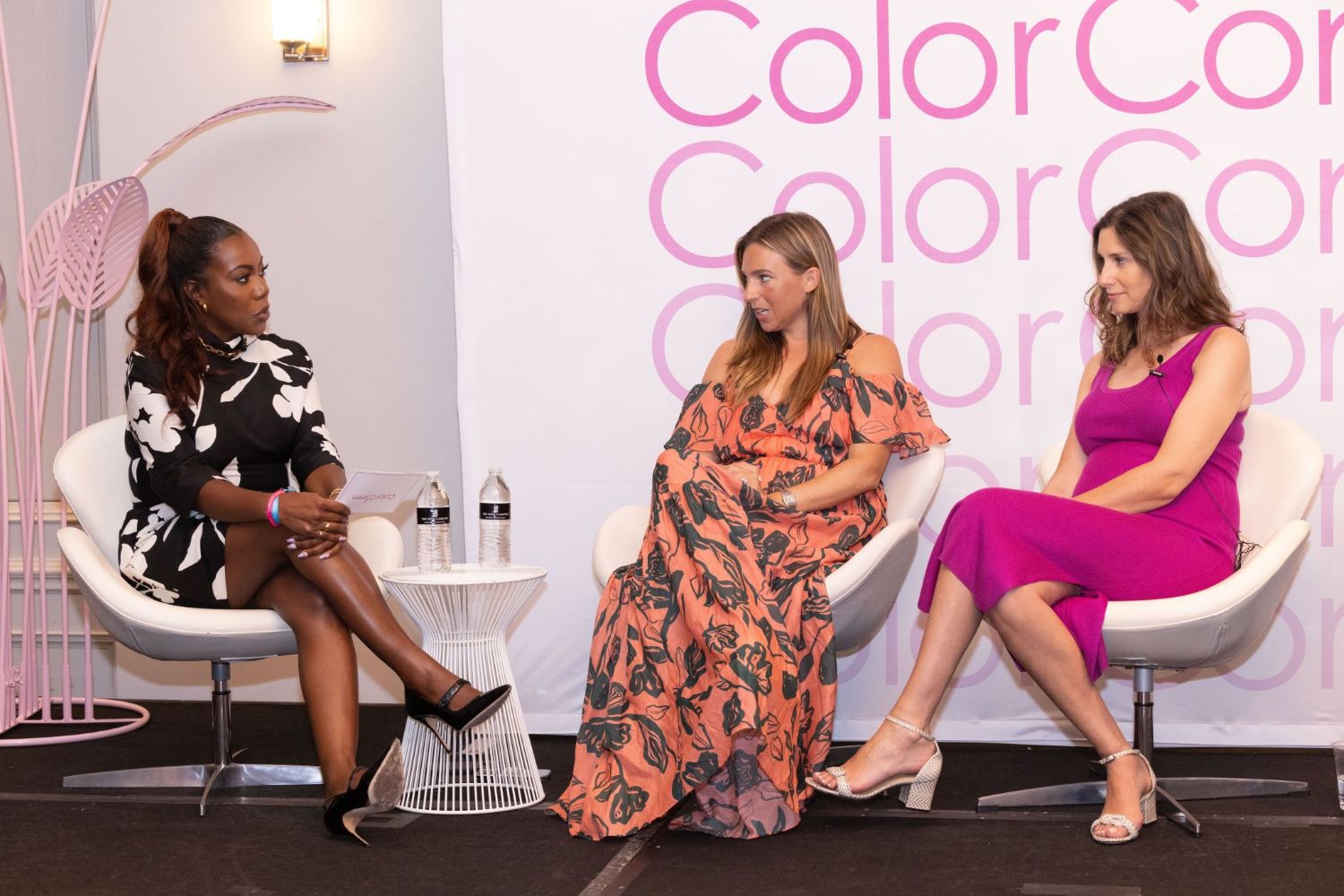
However, these obstacles didn’t deter them from their dreams. Instead, they motivated Danielle and Carly to refine their pitch and find more effective ways to communicate their vision.
Danielle explains that they needed to improve their storytelling and become clearer and more concise in their pitches. They practiced pitching to each other, making their presentations more conversational and focusing on why they saw an opportunity and why they were the right people to execute it.
They also sought advice from one of their mentors, asking for feedback on what they were doing wrong and how they could better convey the potential of theSkimm to investors. Taking this advice to heart, they made a strategic pivot in their approach. This adjustment paid off, and they soon received their first “yes” from an investor.
As recalled by Carly, two years into the business, theSkimm’s first institutional investor was Homebrew Ventures. Founders Hunter Walk and Satya Patel, who have backgrounds in product development, provided crucial early support and guidance.
Coming from product backgrounds, these investors stressed the importance of focusing like a product person, meaning that anything not directly tied to growing the business should be set aside.
Carly said, “They come from product backgrounds, so they were like, ‘You have to have focus.’ And we were like, ‘We have focus; we’re so focused.’ They were like, ‘No, focus like a product person.’ And we were like, ‘I don’t know what you mean.’ They said, ‘If there is anything on your plate in front of you that is not directly tied to growing this business, you’re doing the wrong thing.’”
With this guidance, Danielle and Carly decided early on to prioritize growth over monetization. They understood that they couldn’t achieve both simultaneously, especially in the beginning. Their goal was to demonstrate how many millennial women were engaging with their brand and product, so they concentrated on growth from day one. Even before securing outside investment, they had brands interested in advertising with them, but they declined these opportunities to maintain their focus on growth.
This strategy inadvertently created a sense of scarcity around their brand, making it even more desirable. Once they secured institutional funding, they continued to say no to potential partners until they reached a significant scale, around 500,000 users. At that point, they began working with their first partners, including JP Morgan Chase, the NBA, and the PGA.
Carly explained, “We purposely chose those categories because everybody was waiting for us to work with a beauty brand, but we wanted to work with brands that you wouldn’t expect us to reach women. A finance brand was super important to us because we all know the stats about financial literacy for women and how women have been left behind when it comes to generating wealth. We were obsessed with how we could get sports and finance involved.”
The Rise of theSkimm – A Company that Empowers Women
Initially starting as a daily email newsletter, theSkimm quickly gained a large following, reaching 7 million subscribers within seven years.
Having investors allowed them to not only grow theSkimm but also envision a larger future for their business. They transitioned from just Carly and Danielle to hiring their first employees and building a team. They expanded from one newsletter to multiple, added social media platforms and podcasts, and created bigger experiences for their community, activating their audience in more impactful ways.
Financially, the company has been successful in securing substantial funding. They have raised a total of $29.5 million over 9 rounds, with their latest funding raised on September 20, 2019, from a Series C round. The company is funded by 22 investors, including Human Ventures and Halogen Ventures. As of June 1, 2016, TheSkimm had a post-money valuation in the range of $50 million to $100 million.
Product development has been a key area of focus for TheSkimm. Their core product, The Daily Skimm, provides a digest of news stories each weekday morning, making it easy for subscribers to stay informed. They also offer Skimm Ahead, a paid subscription service that integrates key events directly into subscribers’ calendars.
Skimm Studios, launched with the help of an $8 million investment from Fox, offers video content that provides insights into what female millennials think.
The Beauty of Being Co-Founders and Co-CEOs
Being co-CEOs of a business is a unique and often challenging dynamic, with many people sharing varying perspectives on whether it can work. Some partnerships thrive, while others face significant struggles. For the co-founders of theSkimm, however, their partnership has been a defining factor in their success.
Firstly, Danielle and Carly Zakin shared a similar skill set and had no prior business background, which meant they had to learn and figure things out together.
Danille, recalled, “Neither one of us had a business background, neither one of us was kind of like the tech one or the product one. We had a really similar skill set, which at times was tough but also was really helpful because we needed to figure out things and learn them together.”
“And I think especially as, you know, two young women, first-time entrepreneurs in a very male-dominated field, it was honestly really like it was a confidence boost to me to have someone right next to me who was learning the exact same thing at the exact same time. And between the two of us, you know, one of us was always kind of the better one at that moment of faking it till you make it,” she added.
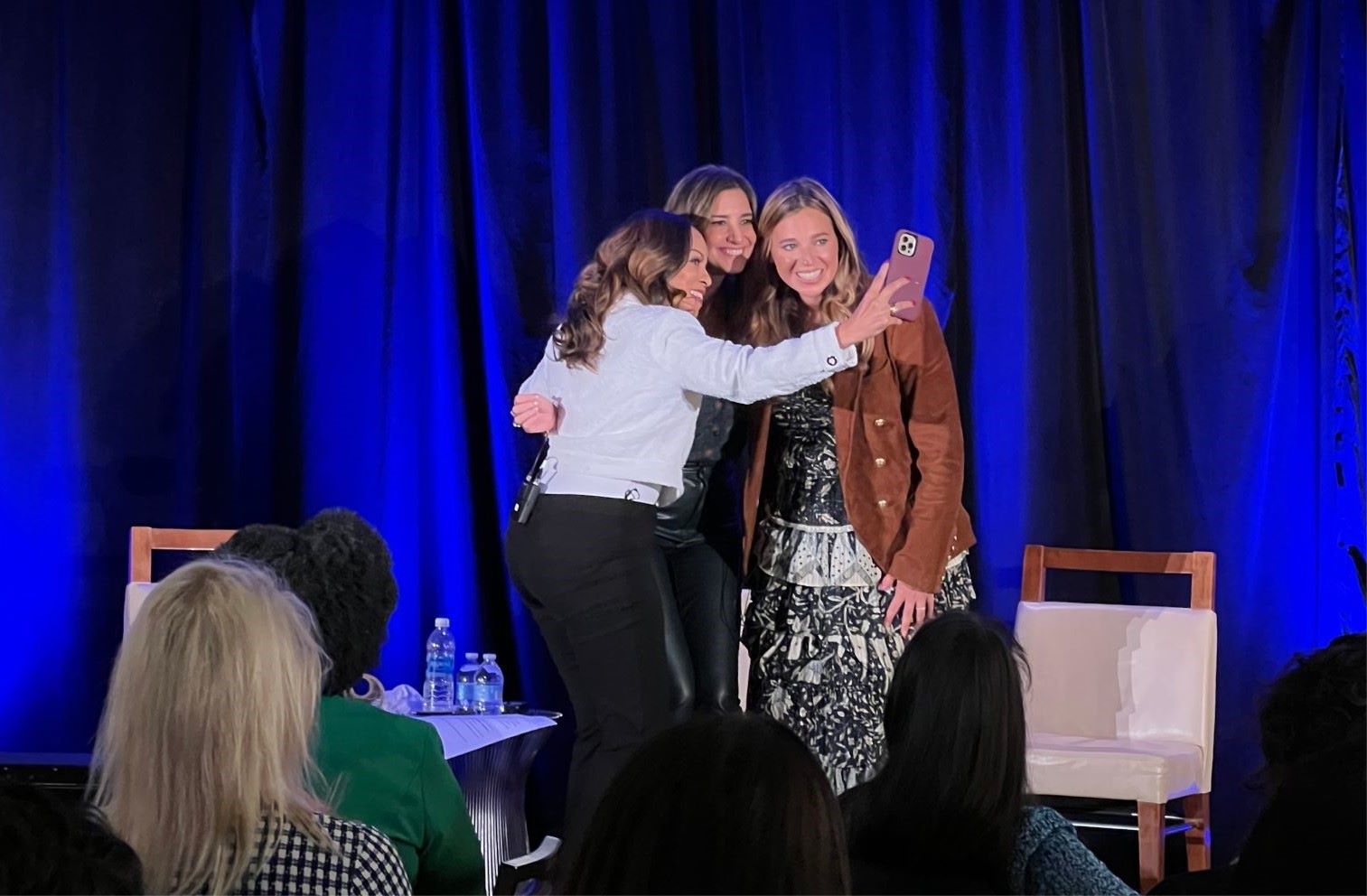
The dual leadership allowed them to manage the company more effectively. They could divide responsibilities and support each other through the challenges of running a business.
Entrepreneurship can be lonely and isolating, but having a co-founder who understands the challenges and can provide support helps mitigate these feelings. This partnership helped them handle the high levels of burnout and anxiety that often come with starting a business.
“I also think that, you know, so much of being an entrepreneur is lonely and isolating, and there are really high degrees of burnout and anxiety and, you know, all sorts of issues that go along with being crazy enough to go on, you know, your own adventure, that I think having someone who understands what you’re going through when you’re too exhausted to talk is really important,” Danielle explained.
Danielle Weisberg’s statement about the benefits of having co-CEOs is supported by a Harvard Business Review study. This study examined 87 public companies led by co-CEOs and found that these firms tended to generate better returns than those with a single CEO. Specifically, companies led by co-CEOs provided an annual shareholder return of 9.5% compared to 6.9% for companies led by sole CEOs over a five-year period.
Who Shouldn’t Be an Entrepreneur?
Entrepreneurship is key to innovation and economic growth, but it’s not for everyone. Daniellle believes that if someone doesn’t consider themselves to be resilient, they will struggle significantly as an entrepreneur.
She explained, “I think that if you don’t consider yourself to be a resilient person, you’re gonna have a really hard time being an entrepreneur. I think that’s probably the biggest thing for me because everything else, I think you learn, you know, from a skill set perspective or you have the ability to learn.”
Carly adds that being able to sell oneself is crucial for entrepreneurs. she says that no matter how brilliant someone is or how great their ideas are, if they can’t sell themselves and their business, they will struggle as an entrepreneur.
“If you are not good at selling yourself, you will have a really hard time being an entrepreneur,” she stated.
Carly also points out that while someone might excel in roles like COO or other top executive positions, leading a company requires the ability to sell the business effectively.
According to Carly, being an entrepreneur doesn’t mean you have to be an extrovert. However, entrepreneurs must be able to adopt a different persona when needed to pitch their business, whether to customers, investors, or other stakeholders. This skill of confidently promoting and “bragging” about the business is crucial for securing funding, gaining customers, and reaching business objectives.
She articulated, “We’re actually both very introverted, but you have to be able to like put that mask on. Um, because no matter whatever type of company you have, in the end, you’re going to have a customer or a need for funding or a need to get something from somebody, and you need to be able to sell.”

